The Diamondback, or Diamondback Rattlesnake, a type of pit viper. People refer to two species of rattlesnakes as “Diamondbacks,” the Eastern and the Western.
Researchers place both species in the taxonomic genus Crotalus, and the Viperidae family. Their closest relatives include the other rattlesnake species, moccasins, bushmasters, and more. Read on to learn about the Diamondback.
Description of the Diamondback Rattlesnake
Both of these rattlesnakes have a similar appearance. Their scales have brown or tan coloration, with dark-colored diamond-shaped patterns along their backs. Like all other members of the genus, they have a hollow rattle on the ends of their tails to warn off predators.
The Eastern species is the heaviest species of venomous snake in North America, and is the largest member of Crotalus. Both species measure anywhere between 4 and 8 feet in length, but most measure under 7 feet long.
Interesting Facts About the Diamondback Rattlesnake
These snakes are quite notorious, but incredibly misunderstood. Humans often vilify these reptiles, but for the most part these rattlesnakes avoid confrontation. Learn more about what makes these reptiles unique below.
- Camouflage – The diamond pattern across their back might not seem like camouflage. However, if you pass this snake hiding amongst a pile of leaves or on a forest floor you likely will not even know it’s there unless it rattles its tail.
- An Eastern’s Rattle – Every time this species sheds, it accumulates an additional rattle. These snakes use their rattles as a warning signal. If a predator comes too close, the snake shakes its rattle as a warning to stay away.
- A Western’s Rattle – While the Eastern species gains a rattle at every shed, once the Western species is fully grown it does not continue to gain rattles. Instead, a new rattle develops with each shed, and an old rattle is lost.
- Why Rattle? – No venomous snake wants to waste its venom, because it must produce more after it uses up its venom stores. The rattle of this species gives predators a warning to stay away, so the snake doesn’t have to waste its venom.
Habitat of the Diamondback
These two species live in a variety of different habitats. The Eastern species has different preferences than the Western species does. The Western lives primarily in arid regions with low rainfall, usually desert, desert edges, and scrub. The Eastern prefers woodlands, forests, scrubby areas, grasslands, fields, and more.
Distribution of the Diamondback
Each of these two Diamondback species has its own unique distribution. The Eastern species lives only in the Southeast United States. It ranges from Virginia through the Carolinas, Georgia, Florida, Alabama, Mississippi, and parts of Louisiana.
The Western species ranges throughout much of the southern United States and into Mexico. They range through Arkansas, Oklahoma, Texas, New Mexico, Arizona, and southern California.
Diet of the Diamondback
These snakes are carnivores, and feed only on other animals. Their prey varies between the species and the snake’s size. Rats and mice are their most common prey, but they also eat squirrels, birds, frogs, lizards, rabbits, quail, and more.
They use their camouflage to hide quietly and wait for prey to pass near them. When prey strays too close, they strike forward, inject their venom, and then let the prey die before they eat it.
Diamondback and Human Interaction
Human activity impacts these reptiles differently. Humans hunt this reptile for its skin, meat, and for “roundups” to remove them from an area. Habitat destruction also poses a danger to the Eastern species.
Regardless of these interactions, both species have strong population numbers. Though populations in certain regions face decline, the IUCN lists both the Eastern and Western species as Least Concern.
Domestication
Humans have not domesticated these animals in any way.
Does the Diamondback Make a Good Pet
No, you do not want to own either species as a pet. Though they do not seek out humans to bite, they certainly will when threatened. Their venom can be quite dangerous, and can kill a human.
Diamondback Care
Zoos and research facilities keep these snakes to help educate the public and to collect their venom. They use the collected venom to create antivenom, which can save the lives of snakebite victims. Their enclosures must have plenty of hiding places, and controlled temperature and humidity to replicate their natural habitats.
Behavior of the Diamondback Rattlesnake
Both species are most active during the daytime. They bask in the sun throughout the day, and they hunt periodically in the morning and afternoon. Outside of breeding season and hibernation these snakes live solitary lives. As winter arrives, the Western species congregates in large numbers to hibernate. The Eastern species hibernates alone.
Reproduction of the Diamondback
Like all vipers, these reptiles are ovoviviparous. The females retain their eggs within their bodies, and give “live” birth when the eggs hatch. Their gestation period lasts between 5 and 6 months. Litters contain about 10 to 20 young on average. At birth, the young snakes are fully independent and self-sufficient.


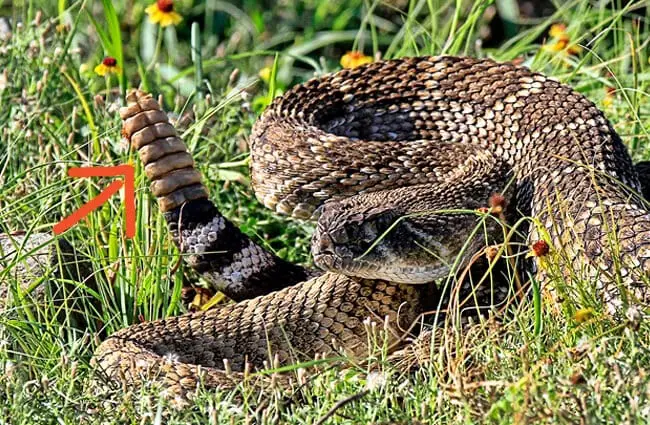


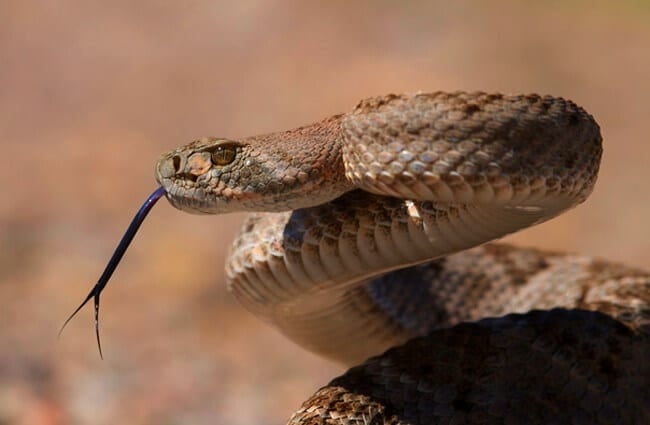


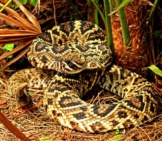

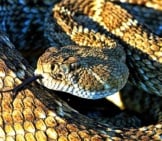

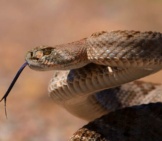
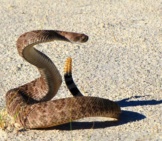
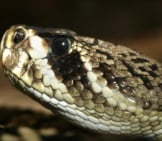
![Red Angus Closeup of a beautiful Red Angus cowPhoto by: U.S. Department of Agriculture [pubic domain]https://creativecommons.org/licenses/by/2.0/](https://animals.net/wp-content/uploads/2020/03/Red-Angus-4-238x178.jpg)












![Red Angus Closeup of a beautiful Red Angus cowPhoto by: U.S. Department of Agriculture [pubic domain]https://creativecommons.org/licenses/by/2.0/](https://animals.net/wp-content/uploads/2020/03/Red-Angus-4-100x75.jpg)

